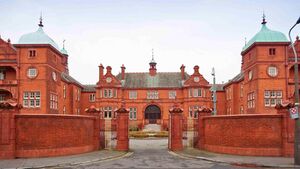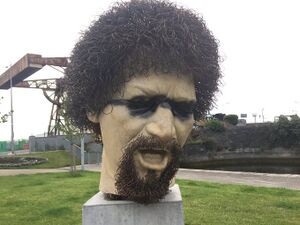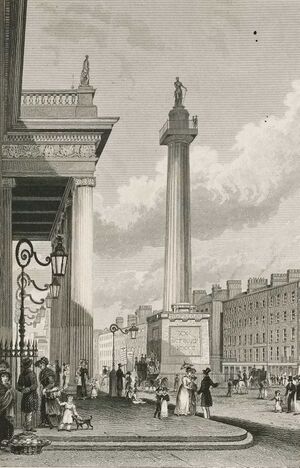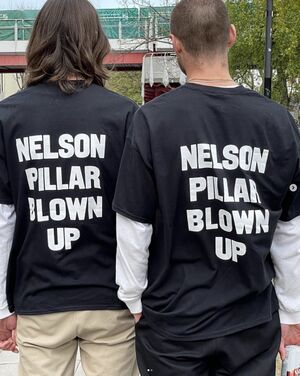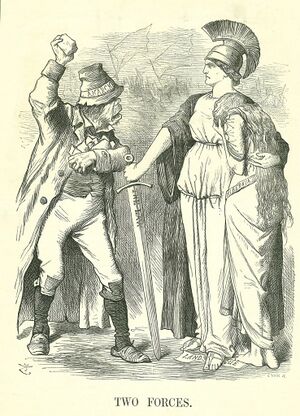Notes on Eire
n 1999 on RTE’s The Late Late Show author Frank McCourt was interviewed by Pat Kenny. McCourt whose memoir Angela's Ashes describes the poverty of 1930’s Limerick. During the interview MCourt is interrupted by a member of the audience, Gerry Hannan. Hannan verbally attacks McCourt for ‘peddling lies about Limerick’ * ( Late Late, RTE, 1999). This video is a meme today in Irish internet culture and has been remixed multiple times. I find this moment particularly interesting when put under the decolonial lens. Hannan, 30ish years McCourt’s junior (i.e he did not live through the same limerick as McCourt) seems to think the tale of poverty and trauma reported in Angela's Ashes is untrue. That McCourt is tarnishing the reputation of Limerick, painting it, and Ireland as a backward, smutty hell-hole. Hannan cannot accept this. Hannan is a reverse iconoclast, attempting to preserve the veil of obfuscation built by the Irish free State in partnership with the Catholic Church. I find the stage setting for this encounter to be quite interesting as well. The Late Late is a cornerstone of Irish media, even today. And it’s long history is ornamented by a pantheon of audience members who have challenged or subverted the power structure of the show. In 1999, with Hannan, a decade later in 2009 after the crash.
On Dublin’s Brunswick street, a ten minute walk from the house where I grew up, is the Richmond Hospital. A grand Victorian redbrick building. Its roof is adorned with spirals and turrets and atop these are copper domes. They are akin to the onion domes of orthodox churches but they are even more similar to the domes of Indian palaces. My father once told me that this building was intended to be built in India by the British Empire. He went on to tell me that this building had been designed and planned in Britain and that the colonial bureaucracy had made a clerical error, mistaking the handwritten word India for Ireland. I have not been able to find any evidence to support this, but I think this myth tells a story about Ireland, and the empire that colonised it.
Iconography and Iconoclasm plays an important role in Ireland. We place much power upon the symbols that we surround ourselves with. The first act of the Irish Free State in 1922 was to repaint the post boxes or ‘red brit boxes’ to green.(Harrison, Irish Times, 2017) The Free State being the political equivalent of a premature infant could not afford to paint them all in one particular shade of green, so they were painted in a variety of shades, whatever was available.
In 1966, a republican splinter group bombed Nelson’s Pillar on O’ Connel Street. The statues' remains were carted off to ‘corpo’ lock -up. The lock up was burgled by art students of the same school that I studied at; NCAD. They stole Nelson’s head. The head appeared mysteriously in several locations afterwards including on stage during a performance by The Dubliners. Which is Ironic as now there is a statue of the head of Luke Kelly on Sheriff Street. The giant statue of the famed irish singer is a colossal sculpture. Oxidised and curled rebar steel makes Kelly’s curly hair. The sculpture by Vera Klute is regularly defaced most often by the process of having spray painted sunglasses thrown across the eyes of the giant head Citation needed
Nelson’s head is now on display at Pearse St. Library. As a child I remember my father taking me to see Nelson's head. I did not fully understand what we were about to see and I imagined a Dr. Frankenstein-esque vat with the preserved head of the lauded Briton bobbing listlessly in formaldehyde. I was disappointed to discover that it was simply the bust of a broken statue. Nelsons broken column has recently transformed again into an icon of irish civic nationalism, being remixed into tshirts and prints to be sold by designers and 'influencers' on instagram.
In the summer of 2016, I was twenty years old and unemployed and my girlfriend at the time managed to get me a nixer (irish slang for an odd job) working at The RDS (Royal Dublin Societty) Horse Show. The Horse Show has been running since the 19th century Citation needed
The job I found myself doing was assisting a painter sell her equestrian paintings. A large wing of the RDS campus was dedicated to the sale of equestrian artworks. I handed out business cards and in general the job was not very tasking. The painter’s mother in-law came to see the Horse Show as I was working. Her name was Dorothea Findlater and she was perhaps the only person left in Ireland at that time who remembers the Easter Rising of 1916. She was 106 years old when I met her. Her father was Harry de Courcy Wheeler, an officer of the British Forces in Ireland during the Rising. He was there was rebels surrendered to the british, he accepted there defeat and I met his daughter 100 years after the rising.
The Shamrock may be a symbol synonymous with Ireland but within Ireland the weight and importance of the shamrock is not high upon our lists. My brother and I were in Eindhoven for a football match and we went into a pub with a guinness sign hung above the door. As the bartender poured our pints of plain and we noticed a stage swirling motion they were using while they poured our stout. When we received the drinks we saw that the bartender had drawn a shamrock into the foam of the pint. I have never come across this in ireland. The word shamrock reminds me instantly of McDonalds’ St.Patricks day special the shamrock shake.
I consider myself a civic nationalist and I think many others in Ireland do too* citation needed. Symbols that are of real importance to civic nationalism are perhaps less known abroad. St. Brigid’s Cross, Sheela Na Gig, The Lady on the Rocks. There is also a rising popularity with Irish Modernist design from the 50s/60s/70s. Some of these designs are reproduced and remixed to be sold as print drops on instagram, and in a way this remixing of state design seeks to celebrate it’s aesthetic while bringing it outside of Ireland in it’s infancy which was undoubtedly a turbulent, conservative and poverty stricken time.
The two most recognisable flags in the world are undoubtedly the stars and stripes of the United States and the Union Jack of the United Kingdom. These flags are relatives and they have a shared history. Both these flags easily end up being used within branding and especially clothing. Once upon a time I would have happily worn a tshirt with an american flag used as a motif but I would draw the line at the union jack. Reebok trainers, jack wills hoodies, certain outdoor rain jackets *citation needed all feature the Union Jack and it is now a trend for when Irish nationalists find themselves buying an item of clothing with our colonisers flag, to cover up the union jack, by simply painting over it or replacing it with the irish tricolour.
The guinness harp
References I need to gather some appropriate sources, ones that have similar post colonial approaches and alternative perspectives of irish statehood


